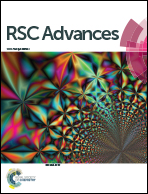Stacking interactions of nickel bis(dithiolene) with graphene and beyond
Abstract
Density functional theory (DFT) with dispersion correction has been used to study the stacking interactions of the nickel bis(dithiolene) molecule and graphene. As in our previous study of the nickel bis(dithiolene) molecule and benzene, two different configurations were considered for the nickel bis(dithiolene) molecule and graphene, and the whole potential energy surface (PES) was explored for each of them. The stacking interaction energy is comparable with other similar systems in the experiments, and it is shown that the surface-mediated interactions play a role in determining molecular orientation. Based on the results of the nickel bis(dithiolene) molecule and graphene, we also studied a new two-dimensional (2D) heterobilayered material consisting of a 2D nickel bis(dithiolene) sheet and graphene or hexagonal boron nitride (h-BN). It turns out that h-BN is a good substrate for the 2D nickel bis(dithiolene) sheet, an organic topological insulator, to maintain its original properties, while the 2D nickel bis(dithiolene) sheet behaves like a metal when forming a new 2D heterobilayered material with graphene. These observations would undoubtedly enrich the current study of 2D heterobilayered materials.


 Please wait while we load your content...
Please wait while we load your content...